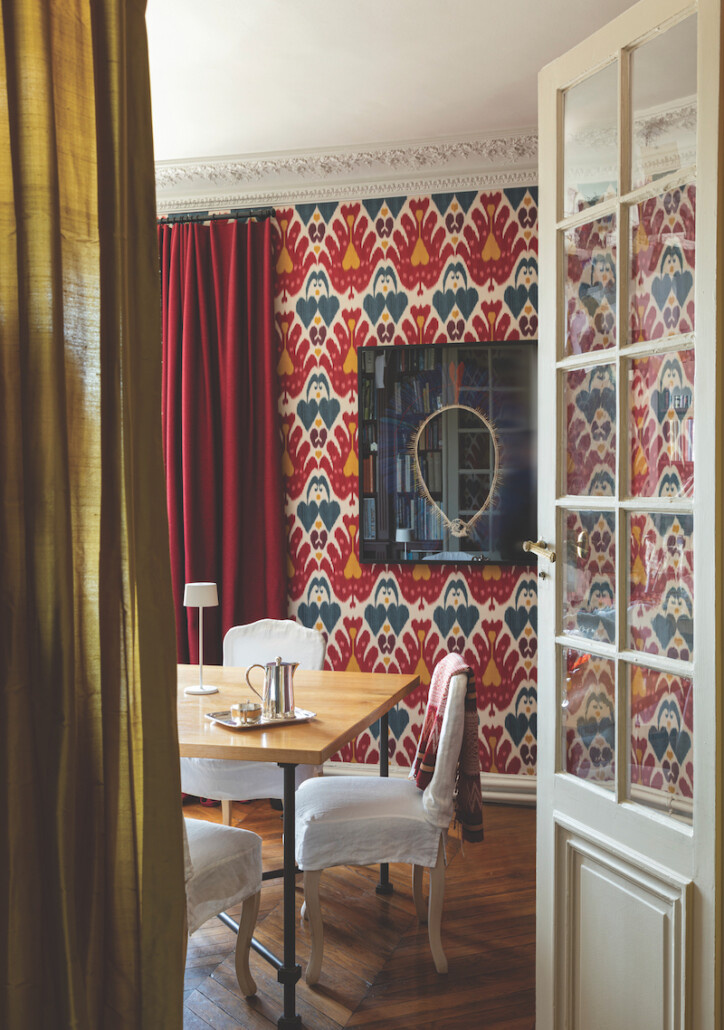This beautifully crafted anthology documents the past, present and future of one of France’s leading fabric designers. Words by Rose of Sharon Leake.
Through three patrilineal generations, Maison Pierre Frey has held court as a leading French producer of furniture textiles and wall coverings. Pierre Frey: A Family Legacy of Passion and Creativity is a new book, told in first person narrative, by Patrick Frey. The anecdotes and recounts told by Patrick beautifully weave together the story of how his father (Pierre Frey), himself and now his three sons have established the house’s reputation for originality and eclecticism in the industry. Like father like son, this is a story that gives more than interior design inspiration.
“What crazy idea will Patrick Frey, our magician of a father, pull out of his hat next?”, write Vincent, Pierre, and Matthieu Frey, the three sons of Patrick, in the introduction of the book. “This expectation, these surprises, are what make working with him so exciting, such a pleasure. Would we have joined him at Pierre Frey if we didn’t already know about his enthusiasm, his creativity, his joie de vivre? Ever since we were kids, we have enjoyed the good fortune of having a father with a huge appetite for life…and has a gift for sharing his sense of wonder.”
Founded in 1935 by Pierre Frey, after he acquired the esteemed houses Braquenié and Le Manach, Maison Pierre Frey possesses one of the most critical private textile heritages in the world, detailed here with love (of the industry and of family), curiosity and pride.
Maison Pierre Frey has worked with the Louvre and the Château de Versailles, decorated castle interiors, and provides the fabrics and wallpapers of private homes around the world. The book draws from the company’s archives of more than 25,000 documents, which date from the 16th century to the present, and follows the personal account of Patrick Frey as he reflects on his four decades of work. Combining artisanal craftsmanship with contemporary processes and designs, Pierre Frey has in recent decades sought inspiration from around the world, most notably here, Australian Indigenous art.
“What do the Italian baroque and Australian Aboriginal art have in common?,” asks Patrick in the book. “For me, it is the intensity of a visual, graphic emotion, which is transformed into an idea or a desire to draw. About ten years ago, I went to present my collections in Melbourne. I knew very little about Aboriginal art at the time, and my discovery of the Bunjilaka Aboriginal Cultural Centre, the part of the Melbourne Museum dedicated to it, literally overwhelmed me. It was love at first sight. Back in Paris, I got the creative team together and we went to visit the Aboriginal collection at the Muse Quai Branly JacquesChirac, accompanied by a specialist guide. We read all the books, consulted hundreds of works online, and, after several months of work, finally created our own designs. I negotiated an agreement with the Aboriginal Art Association of Australia, allowing me to adapt certain works. A collection was born, Roots, which is extremely modern. I find the modernity of this age-old art and its spiritual dimension utterly fascinating.”
Collaborations such as this have become part and parcel for Patrick at Pierre Frey, who sees the industry as an imagined universe of colour, texture and pattern. “My job is a bit like cooking: just as the recipe for a good dish combines the right ingredients, the right technique, the right temperature, and the right sauce, a successful collection is the perfect combination of several designs, several colors, and several materials,” writes Patrick. “But, like cooking, it also needs something more, a pinch of spontaneous creativity, a very personal touch, an innate gesture that is a gift from heaven or that you have in your blood. I always add, somewhere, my own dash of salt.”
Below: View into a dining room enriched by a sumptuous wallpaper design from Maison Pierre Frey. PHOTO: MATTIA AQUILA. COURTESY: FLAMMARION

